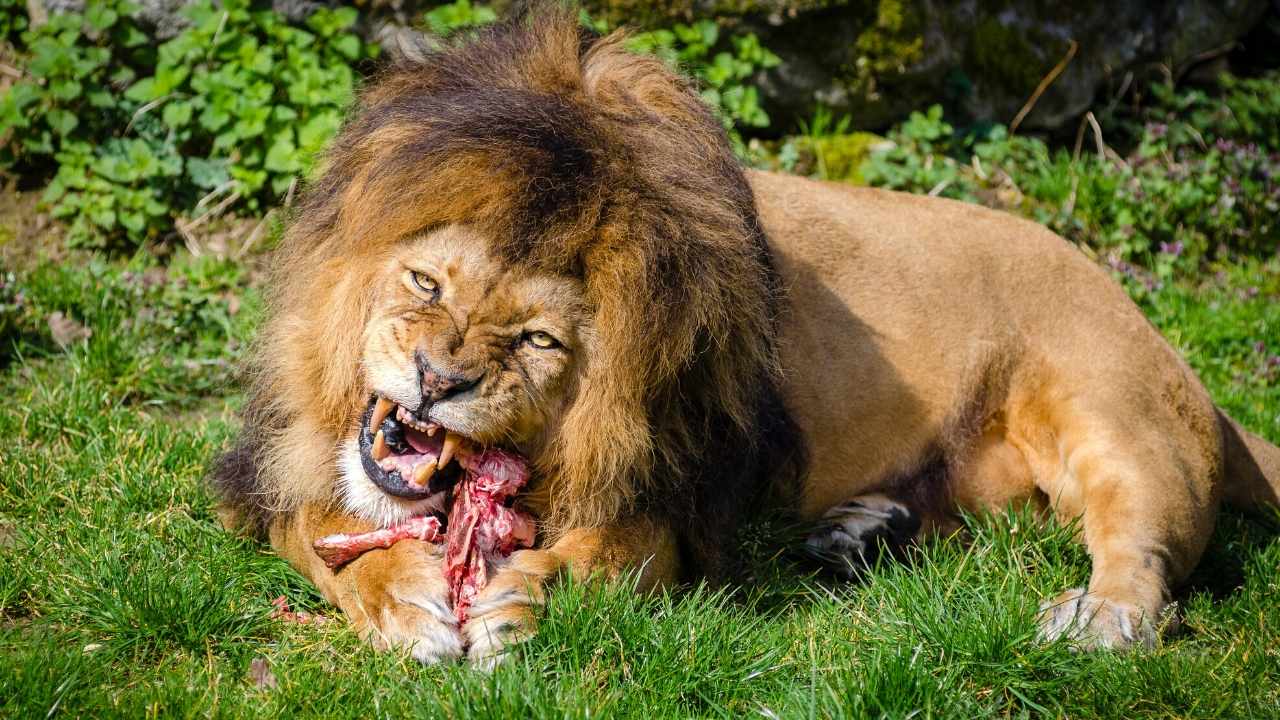
In a disaster situation, survival skills are important for every person, whether they are a city dweller or a country dweller. Without these skills, it's impossible to survive. You must be able to cope with any crisis. An urban survival plan should include street smarts. To survive in a city that is difficult to navigate, you must learn how to improvise. You should be familiar with the climate in your area and know how you can avoid danger areas.
Understanding the threat is the first step to becoming an urban survivalist. Disasters can come from natural disasters or man-made ones that leave people stuck in the middle. You can prepare yourself for such an event by taking precautions and understanding the threats you might face. You can prepare basic plans by learning how to cook, use a portable water filter, UV water purifiers, or using a water filter straw to purify the water. The key to survival is to learn how to scavenge food and supplies.

Once you have learned to move through a city, the next step to learning how to be stealthy is to do the same. Keep to the shadows in urban settings. Avoid walking on busy streets, including those with rooftops and sewers. Make sure to study maps and practice walking with stealth. This will help you get a better understanding of your destination and how to avoid detection.
The key to urban survival lies in knowing how to identify a disaster's threat. It is best to avoid hostile situations when disaster strikes. A well-prepared urban survivalist will know exactly what to look for before others do. If you find yourself separated from your group, make arrangements for rendezvous points to ensure that you are reunited in the correct time. Make sure to have a basic survival kit and food rations for several nights.
Along with a survival bag, you need a get-home bag. This bag is essential for surviving a disaster. When you're in a disaster zone, you must be able to get out safely and quickly. You can also count on your urban survivalist buddies if you don’t possess enough supplies. Aside from that, it is best to prepare for an urban catastrophe before it happens.

Urban survivalists should have more than a basic emergency kit. They also need to be proficient in the most essential skills. These skills include a survival guide, knife, and extra shoes. They should also know how to build shelters, light a fire and prepare food. They can also learn how to open cans. These are just a couple of the skills necessary to be prepared for an emergency.
FAQ
How many Americans rely on hunting for their livelihood?
Over 300 million hunters reside in the United States. This is nearly twice the number of hunters than New York City residents.
Hunting is an American pastime that dates back centuries. But, Americans are hunting less for sport today than ever. According to U.S. Fish & Wildlife Service (FWS), only 2 percent of the population hunts regularly. The percentage of young adults hunting is even lower.
But while hunting may seem like a relic of another time, it remains popular among older generations. A recent survey found that 68 percent of baby boomers plan to hunt again when they retire. Hunting is a way for them to connect with the natural world and enjoy the outdoors.
Hunting is not a priority for younger generations. According to the National Shooting Sports Foundation (NSSF), only 18% consider themselves to be avid shooters.
That's why FWS is working hard to make sure that America's wild places remain open for everyone to experience.
To raise awareness about public lands in the country, the agency launched the "Wild Lands” campaign in 2014. The agency's goal is educate the public about the importance of conserving these areas and encourage them visit them.
Conservation efforts are encouraged by the Wild Lands program. FWS and National Rifle Association formed a partnership to create Project Gunter, a youth-oriented shooting sports program. The program teaches children how to safely use firearms and helps them improve their marksmanship and safety skills.
Project Gunter now includes women and minorities. It has resulted in more children learning to shoot guns and taking part in wildlife conservation.
How much does it cost to hunt?
Prices for hunting trips vary depending on where they are taken, the species and size of the animals being hunted.
Generally speaking, the average price for a two-person hunting party ranges between $500-$1,000 per person. This includes accommodation, food as well as equipment, licenses and gas.
There are some areas that charge more than others. If you plan to hunt during peak seasons, such as fall turkey season, expect to pay even more.
What gun is best for hunting?
A.22 caliber firearm is the best weapon to hunt with. It's light and easy for hunters to carry. It also allows you to shoot accurately at long distances.
You should not expect an attack by a prey to make this firearm most useful.
You don’t want to waste ammunition shooting at trees, because it would do little harm. It is important to aim at your prey with a clear shot.
You can hunt larger game with a rifle in the.30 caliber range. However, it's heavier than a.22 caliber rifle.
You will need to practice more to achieve the same level of accuracy with a 30-caliber rifle.
How many deer hunters are there in the U.S.
The number of deer hunters in the United States is estimated at over 20 million. This includes both recreational as well as professional hunters.
What is the most important part when hunting animals?
How do you get there? The first step is to learn how to shoot accurately. Next, we need to learn how to hit the target. We must also learn to adjust when we miss our target.
It is essential to know the basics of hunting. You won't improve if you don't understand what you are doing. While you may think that you've improved by taking better shots, the fact is that you won't be able to use those shots as a guide. This is also true for hitting targets. It's impossible to understand why you're not hitting your targets. That means you need to know what you're aiming for.
Knowledge is key. Understanding the animal you are hunting will determine your ability to hunt it. If you go out into nature, you will want to be as knowledgeable as possible about the animals you come across. It is important to understand their habits, behaviors, and personalities. You can plan your hunts in this way to ensure they run smoothly.
Learning from past success stories is a great way to improve your skills. This topic is covered in many books. In addition, there are websites like www.thehuntingzone.com that offer great tips and advice. People with many years of experience are another benefit. They can help you identify what works and what doesn't work.
Once you have learned everything, it is time for practice. Practice makes perfect. Practice is not enough. Instead, practice until you feel confident. Confidence is a way to relax and enjoy the process. Relaxation can help focus your attention on the task. Concentration is key to maximizing every opportunity. Opportunities are only available when you're calm and focused.
It's time for you to test your new skills. If you fail, don't be discouraged. Keep practicing and improving. You'll eventually find success.
How many people rifle hunt in the US?
It is estimated that around 2 million hunters hunt with rifles each year.
These hunters are mostly males, aged between 18-55 years old and live in rural areas.
They typically hunt alone, using either a bow or crossbow, and they usually hunt during daylight hours.
Whitetail deer (68%), mule deer (13%), and black bears (10%) are the most common targets for hunters.
While there aren't any national statistics on how many women hunt this sport, evidence indicates that the numbers of female hunters is increasing.
Statistics
- Less than 1% of Hawaii's population has a hunting license. (stacker.com)
- Thanks to the 1937 Pittman-Robertson Act, an 11% excise tax was placed on the sale of firearms, which were then used for conservation. (stacker.com)
- Over the past 50 years, the number of hunting licenses in California has been on a rapid decline, falling 70% from more than 760,000 in the 1970s to under 268,000 in 2020—even as the state's population has skyrocketed, according to The Mercury News. (stacker.com)
- - Percent of residents with paid hunting licenses: 0.7%- (stacker.com)
External Links
How To
How to build deer blinds
A deer-blind is a type de hunting device used to hide game animals like deer, elk, etc. It usually consists of an enclosed area made of wood or canvas that is covered with branches, leaves, and sometimes covered with leaves. The hunter will hide inside the enclosure while he waits for his animal to pass. Hunting at night is easier with a deer blind.
There are many types of deer blinds. Some are portable while others are permanent structures. They are often made from metal, plywood, cardboard, plastic, canvas or metal.
Box blinds, also known as box stands, are the most popular type of deer blinds. They consist of a wooden container with a roof and walls. Because they are easy-to-assemble and transport, boxes are very popular.
A tree stand, another type deer blind, is also available. Tree stands are designed to look natural so that no one would suspect they were there. Most tree stands are permanently attached to trees.
Other types include ground blinds, which are similar to tree stands except they are built into the ground. Ground blinds are often camouflaged with grass, dirt, rocks, or sand. Ground blinds can also be called "ground boxes".
There are many ways to hunt deer blinds. One option is to just wait for the animal and then stand still. Another way is to move around and try to scare the animal away. If you choose this method, make sure you stay quiet and don't move too much. This could lead to the animal thinking you're a prey and running away.
The first step in using a deer-blind is to choose a location. Pick a spot where there is no wind to blow your scent towards the animal. Avoid areas that are frequented by hikers.
Also, ensure you understand how to set up a deer blind. The last thing you want is for the animal see you and run.